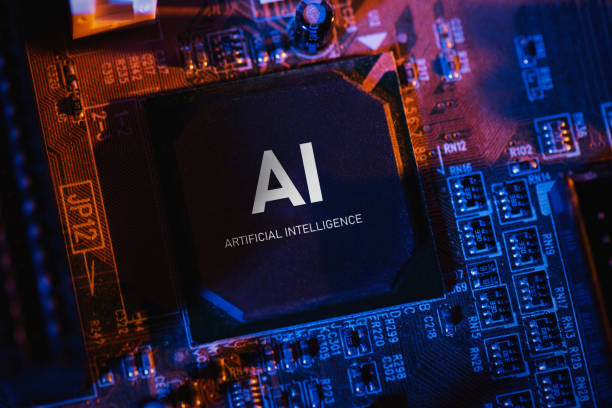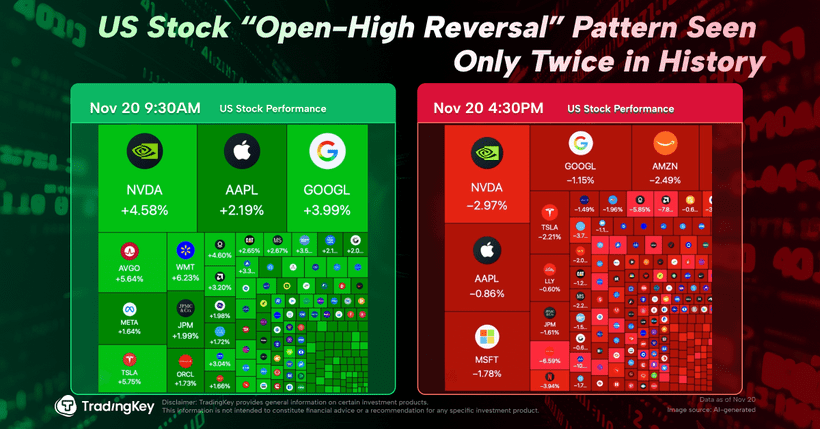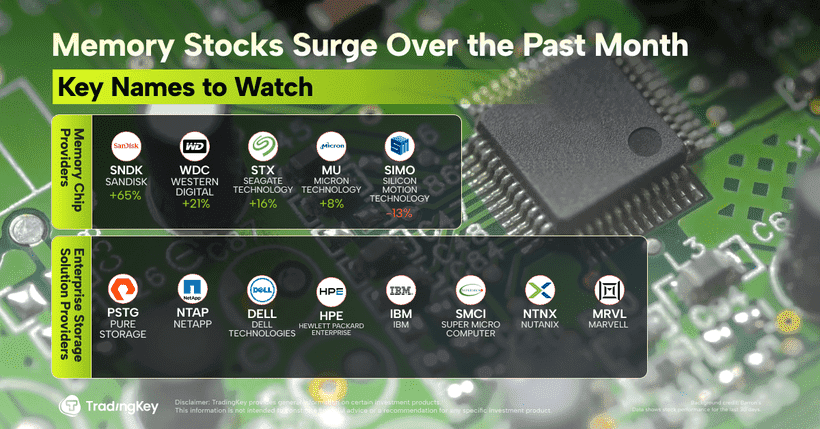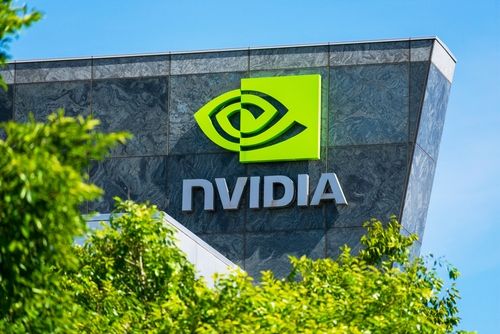U.S. Stock Strategy: The Rapid Development of AI Signals a Promising Future


Executive Summary
TradingKey - Since Trump announced a 90-day suspension of the "reciprocal tariffs" imposed on certain countries on 9 April this year, all three major U.S. stock indices have recorded significant gains. Looking ahead, against the backdrop of easing global trade frictions, rising expectations of interest rate cuts by the Federal Reserve, and the positive support from tax cuts for U.S.-listed companies' post-tax profits, we believe the broader U.S. stock market is poised to continue its upward momentum. Against this bullish backdrop for the overall U.S. market, we are particularly optimistic about the AI sector in U.S. equities. In the following analysis, we will focus on the U.S. AI stock segment.
The latest U.S. Chip Act and AI regulatory framework have infused the U.S. AI stock sector with significant policy advantages. The recently implemented "One Big Beautiful Bill Act" substantially boosts tax credits for semiconductor manufacturing. Concurrently, the "AI Action Plan" embraces a "light-touch regulation, development-focused" approach, streamlining data centre permitting processes and securing energy supplies to expedite the buildout of computing infrastructure. This robust policy combination creates structural opportunities for the U.S. AI stock sector.
Bolstered by policy support, AI-related companies have delivered remarkable and standout performance. This strong showing is also attributed to their inherent strengths: these companies have leveraged technological innovation to further enhance production efficiency and hold distinct advantages in terms of operating leverage. In terms of production efficiency, AI enterprises have demonstrated robust growth momentum in gross profit margin, revenue per employee, and return on equity (ROE). In terms of operating leverage, AI tech stocks have excelled in the ratio of gross profit growth to revenue growth.
Currently, AI budgets have been integrated into enterprises’ core IT and business budgets, marking a shift from being a peripheral experimental initiative to a strategic core domain. At the application level, remarkable progress has been achieved both in enhancing internal efficiency and optimising customer experience. Meanwhile, AI is driving enterprises to restructure workflows, data flows, and decision-making mechanisms, gradually permeating from IT departments to core business units such as product development and operations, thus emerging as a key engine for corporate innovation. Judging from the current development momentum of AI in fields like production optimisation, technological innovation, and scenario-based applications, the medium- to long-term prospects for the entire AI industry are undoubtedly bright.
The promising prospects of the AI industry have driven a significant surge in the stock prices of AI enterprises. This has led many analysts to argue that there is a bubble in the current AI sector. However, we believe this is more likely the start of a structural bull market rather than a bubble. Specifically, while AI stocks have high valuations, their profit growth rates are equally remarkable. This has resulted in the PEG ratio of the AI sector being lower than that of non-AI stocks, and the "EPS Sharpe Ratio" being higher than that of other stocks—factors that demonstrate the rationality behind their high valuations.

Source: Mitrade
1. U.S. Broader Stock Market
Since Trump announced a 90-day suspension of the "reciprocal tariffs" on certain countries on 9 April this year, the three major U.S. stock indices have all recorded significant gains: as of 5 August, the Nasdaq Composite Index has risen by 22.1%, the S&P 500 Index has advanced 15.4%, and the Dow Jones Industrial Average has climbed 8.6%. During this period, the Nasdaq Composite and S&P 500 indices even hit new all-time highs on multiple occasions (Figure 1).
On 22 July, the United States successively reached multiple key cooperation agreements with the Philippines, Indonesia, and Japan. On 28 July, the world’s two largest economies—the United States and the European Union—also successfully agreed. Looking ahead, against the backdrop of easing global trade frictions, rising expectations of Federal Reserve rate cuts, and tax reductions providing positive support to the post-tax profits of U.S. stock-listed companies, we believe the broader U.S. stock market is poised to sustain its upward momentum.
Against the backdrop of a bullish outlook for the broader U.S. stock market, we are particularly optimistic about the AI sector in U.S. equities. Next, we will focus our analysis on the U.S. stock AI sector.
Figure 1: Trends of the Three Major US Stock Indices, 9 April 2025 – 5 August 2025
.jpg)
[Note: 9 April 2025 = 100 Source: Refinitiv, TradingKey]
* For related information, refer to the article published on 5 August 2025, titled “Can U.S. Stocks Keep Rising? Wall Street Voices Growing Divergence”
2. Policy Support for the AI Sector
The latest U.S. Chip Act and AI regulatory framework have injected significant policy catalysts into the U.S. AI stock sector. The recently enacted "One Big Beautiful Bill Act" sharply increases tax credits for semiconductor manufacturing, directly spurring giants like Intel and TSMC to accelerate U.S. wafer fab construction. This policy also provides robust support for AI chip production, enabling companies like NVIDIA and AMD to significantly boost advanced process chip capacity, directly addressing the immense computational demands of large-scale AI models.
The Trump administration's concurrent "AI Action Plan" adopts a "light regulation, development-driven" approach, streamlining data centre approval processes and securing energy supplies to accelerate computing infrastructure development. This has spurred companies like Oracle and Microsoft to participate in multi-billion-dollar data centre investment plans.
Under this powerful policy mix, the U.S. AI stock sector is poised for structural opportunities. According to Morgan Stanley, global AI data centre investments are projected to reach $2.9 trillion by 2028, underscoring a clear long-term growth trajectory for AI hardware and infrastructure companies.
3. The Combination of Production Efficiency and Operating Leverage
Bolstered by policy support, AI-related enterprises have delivered remarkable performance. This strong showing is also attributed to their inherent strengths: these companies have leveraged technological innovation to further enhance production efficiency and hold distinct advantages in terms of operating leverage.
3.1 Production Efficiency
Specifically, with the continuous improvement of productivity, AI-related companies have demonstrated a sustained positive trend across multiple key financial metrics: driven by technological empowerment, metrics such as gross profit margin, revenue per employee, and return on equity (ROE) have all climbed steadily, reflecting strong growth momentum.
In terms of gross profit margin performance, take AppLovin as an example. The company has built a robust mobile advertising ecosystem leveraging AI technology, resulting in a standout gross profit margin. According to its Q2 financial report released on 6 August, AppLovin achieved a gross profit of $1.1 billion in the current quarter. This pushed its gross profit for the trailing 12 months (1 July 2024 – 30 June 2025) to $4.51 billion, with a gross profit margin of 78.6% – a significant increase from the 61.7% recorded in the 2020 fiscal year (Figure 3.1.1). Another case in point is ROE, where top AI companies have shown even stronger growth momentum. Alphabet, the parent company of Google, has optimised its operations through AI-driven precision advertising technologies. Its current ROE stands at 34.8%, nearly doubling from 19% in 2020, which has become one of the core drivers supporting the growth of its market value (Figure 3.1.2).
Figure 3.1.1: AppLovin Gross Margin (%)
.jpg)
Source: Refinitiv, TradingKey
Figure 3.1.2: Alphabet ROE (%)
.jpg)
Source: Refinitiv, TradingKey
3.2 Operating Leverage
In the critical dimension of operating leverage—defined as the ratio between a company’s gross profit growth and revenue growth—AI tech stocks have stood out with exceptional performance. Compared to other stocks in U.S. stock indices, AI-related enterprises have demonstrated distinct superiority in this metric. This not only directly reflects their sophisticated management capabilities in cost control but also underscores their strong profitability in accelerating profit release amid revenue growth.
Take Amazon as an example: its AWS cloud services, leveraging optimisations in AI computing power clusters and machine learning platforms, achieved a 13.3% year-on-year revenue growth in the second quarter of 2025. Meanwhile, its gross profit margin rose from 50.1% to 51.8%, with gross profit increasing by 17.1% year-on-year. The operating leverage ratio stood at 1.28, meaning every 1% growth in sales drove a 1.28% increase in gross profit (Figure 3.2.1). Another case is Meta Platforms, the social media giant. Following upgrades to its AI recommendation algorithms, the company recorded a 21.6% revenue growth in Q2 2025. Its gross profit margin climbed from 81.3% in the same period last year to 82.1%, with gross profit surging by 22.9%. Similarly, its operating leverage ratio exceeded 1 (Figure 3.2.2).
Figure 3.2.1: Amazon Financials
.jpg)
Source: Refinitiv, TradingKey
Figure 3.2.2: Meta Financials
.jpg)
Source: Refinitiv, TradingKey
It is worth emphasising that the outstanding performance of AI-related stocks does not rely on macroeconomic conditions; instead, it stems from substantial productivity improvements driven by technological innovation. Such efficiency optimisation and profit model upgrading powered by AI technology constitute the core support for the long-term strength of their stock prices.
4. AI Development and Achievements Signal a Promising Future
AI budgets have become a core component of enterprise IT and business strategies, marking a shift from experimental sidelines to strategic priority. In recent years, corporate investment in AI has surged significantly, with generative AI projects emerging as a key focus. Additionally, AI application procurement processes are becoming standardised, aligning with traditional software acquisition practices, with performance, cost, security, and compliance as critical considerations.
In terms of internal efficiency, AI enables process optimisations such as automated document processing and code generation, significantly reducing development cycles for SaaS companies. In the realm of customer experience enhancement, AI-powered solutions like intelligent customer service, personalised recommendations, voice recognition, and sentiment analysis are widely adopted, with related investments growing exponentially.
Furthermore, AI is driving enterprises to reengineer workflows, data streams, and decision-making processes, expanding from IT departments into core business areas such as product development and operations, serving as a catalyst for innovation. The rise of AI agents and reasoning models has prompted companies to actively test intelligent agents for executing complex tasks, advancing the evolution of intelligent workflows. AI is comprehensively reshaping the DNA of enterprise development, becoming a critical pillar for digital transformation and market competitiveness. Given the current momentum of AI in production optimisation, technological innovation, and diverse application scenarios, the mid-to-long-term outlook for the AI industry is exceptionally promising.
5. Are AI Stocks Overvalued? Is There a Bubble?
The promising prospects of the AI industry have driven a significant surge in the stock prices of AI companies. This has led many analysts to believe that there is a bubble in the current AI sector. However, we argue that this is more likely the beginning of a structural bull market rather than a bubble. After researching the market capitalisation share of AI enterprises, their profit contribution ratio, and price-to-earnings (P/E) ratios, we have concluded that the current valuation of the AI sector is on the high side.
However, when evaluating whether a bubble exists in an asset, we cannot rely solely on the level of valuation; the growth potential and sustainability of profits are equally critical dimensions to consider. Although the Q2 financial report data have not yet been fully released, based on the information disclosed so far, AI-related companies have continued their strong performance from the first quarter. This indicates that the prosperity of the AI industry in the U.S. stock market remains on a sustained upward trend.
Against the backdrop of coexisting high valuations and robust earnings growth, the PEG ratio (Price/Earnings to Growth ratio) often emerges as a valuable metric. According to data from JPMorgan, the PEG ratio of the AI sector is lower than that of non-AI tech stocks and other constituent stocks in the index.
Citigroup has introduced an evaluation metric called the "EPS Sharpe Ratio," which is calculated as the annualised growth rate of earnings per share (EPS) divided by the standard deviation of earnings growth. This metric reflects the efficiency and stability of profit growth. Data shows that the EPS Sharpe Ratio of AI-related stocks is significantly higher than that of other stock categories, embodying the characteristics of "high growth with stable volatility" in AI stocks.
In summary, despite the relatively high valuations of AI-related companies, indicators such as the PEG ratio and EPS Sharpe Ratio reveal that the sector’s strong growth momentum and stable growth trajectory indicate that AI stocks are not in a bubble.
6. Risks in the AI Sector
The rapid development of the U.S. AI industry is accompanied by multiple risks that deserve attention. First, startups face immense survival pressure. Despite the active financing activities within the industry, the success rate of startups is only about 35%. A large number of startups are grappling with practical challenges such as difficulties in technical implementation and vague profit models, making their path to survival fraught with obstacles.
Second, soaring computing power costs have become a critical constraint on enterprise development. Statistics show that training an AI model with hundreds of billions of parameters costs over $100 million. Such exorbitant computing power expenses have become a barrier for many enterprises to enter and grow in the AI field.
Third, the AI sector also suffers from chip dependency and supply chain risks. Currently, U.S. AI chips are predominantly reliant on a few giant enterprises like NVIDIA, resulting in a relatively concentrated technological route. This makes the entire AI industry’s supply chain highly vulnerable to external factors such as geopolitics, putting its stability to the test.
Additionally, in the labour market, two issues cannot be ignored: the excessive concentration of top AI talents in a handful of enterprises, and the impact of AI development on employment.
.png)







